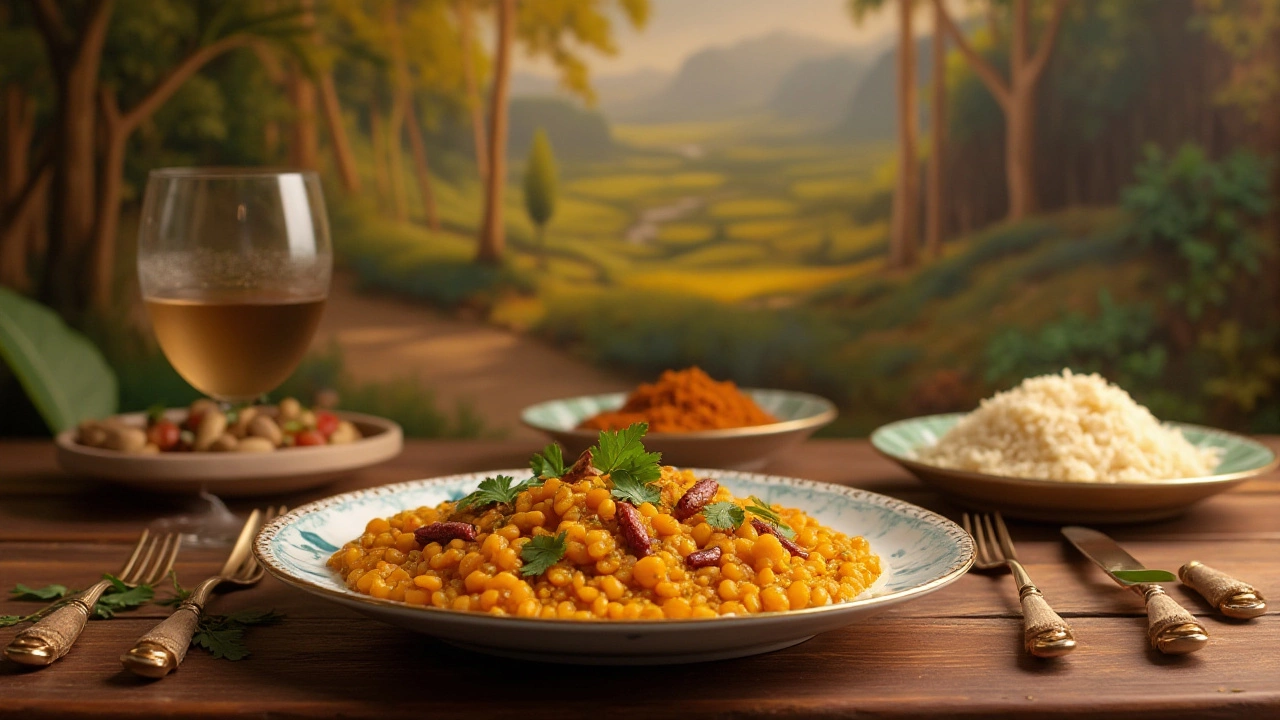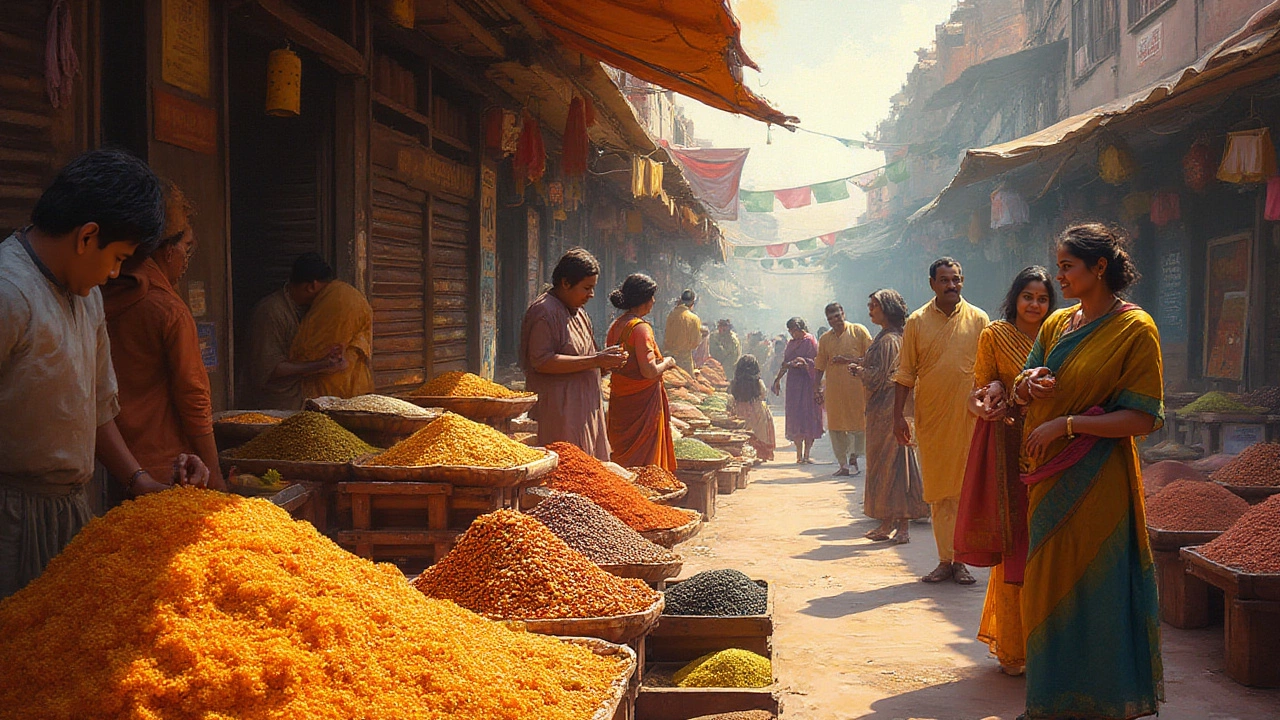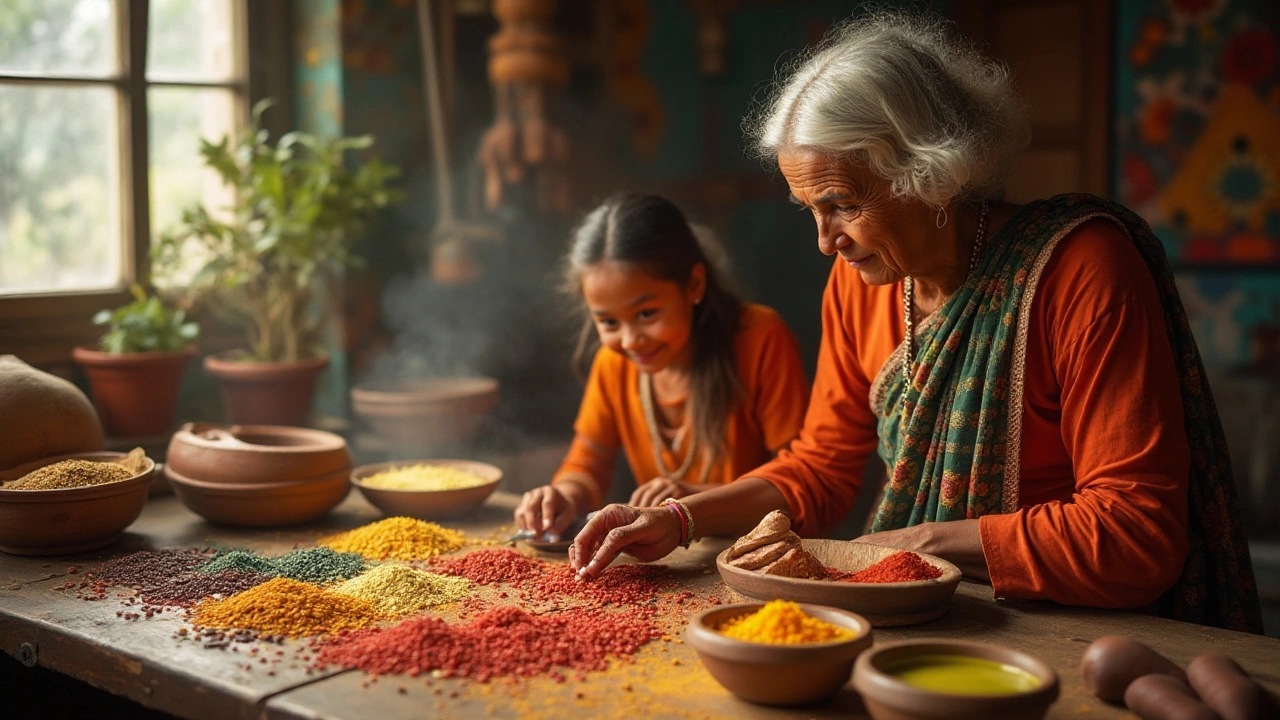Lentils have been cherished for centuries, not just for their delightful taste, but also for their incredible nutritional benefits. These tiny legumes pack a punch when it comes to feeding our bodies with vital nutrients, making them a staple in many cuisines worldwide. Lentils are an excellent source of plant-based protein and are rich in iron, folate, and fiber, helping to keep you full and satisfied.
In this article, we'll navigate through the healthiest way to make the most of lentils, and unravel the secrets to a perfect, simple dal recipe. Whether you are a seasoned cook or a beginner in the kitchen, there's always something new to explore when it comes to lentils.
Cooking lentils can be an enjoyable experience, as they easily absorb the flavors they're cooked with. This makes them a delightful canvas for experimenting with spices and herbs from around the globe. From nourishing soups to hearty salads, the possibilities are endless.
- Nutritional Benefits of Lentils
- Choosing the Right Type of Lentils
- Key Tips for Cooking Lentils
- Simple Dal Recipe for Beginners
- Creative Ways to Serve Lentils
Nutritional Benefits of Lentils
Lentils are a powerhouse in the world of nutrition, offering a bounty of health benefits that make them a vital component of any diet. These small, lens-shaped legumes are known for their impressive concentration of nutrients. At the forefront, lentils are celebrated for their high protein content, making them an excellent choice for those seeking plant-based protein alternatives. A mere cup of cooked lentils provides about 18 grams of protein, supporting muscle growth and repair. Apart from protein, lentils are loaded with dietary fiber. They contain approximately 15 grams of fiber per cup, which aids in maintaining a healthy digestive system and reducing cholesterol levels. With fiber playing such a crucial role in heart health, lentils are ideal for those wanting to keep their cardiovascular system in check.
Lentils also shine as rich sources of essential minerals such as iron and magnesium, which are vital for maintaining energy levels and supporting various bodily functions. Iron is crucial for producing hemoglobin, which transports oxygen in your blood, while magnesium is essential for muscle function and nervous system regulation. Interestingly, lentils contain more iron than most other plant foods, making them particularly beneficial for individuals who are at risk of iron deficiency. Additionally, lentils are abundant in folate, a B-vitamin key for cell division and DNA synthesis, making them especially important for women who are pregnant or planning to become pregnant.
Moreover, lentils boast a low glycemic index, which means they release sugars slowly into the bloodstream, preventing spikes in blood sugar levels. This attribute makes them a brilliant option for individuals managing diabetes or those looking to maintain steady energy levels throughout the day. The versatility in lentils doesn't just end at nutrition; they come in various types like brown, green, red, and black, each offering unique flavors and textures. When you include lentils in your meals, you're not just getting essential nutrients and minerals but also enjoying a versatile ingredient that can render your meals both tasty and nourishing.
According to the USDA, incorporating lentils into one's diet has been linked to a decrease in the risk of numerous chronic diseases, including heart disease and diabetes. Dietary guidelines recommend consuming legumes like lentils several times a week, rewarding you with a burst of health benefits along the way. The kind of nutrient density found in lentils positions them as a leader in simple and wholesome eating. Dr. Jane Smith, a renowned nutritionist, states,
Lentils are a nutritional powerhouse and should be a staple in any diet focused on health and longevity. Their fiber content alone can revolutionize digestive health.Embracing lentils is not only about their undeniable health perks but also about savoring their earthy, hearty flavors that complement a plethora of dishes.
Choosing the Right Type of Lentils
When it comes to cooking with lentils, selecting the right variety can make all the difference in your dishes, both in terms of texture and flavor. Lentils come in a spectrum of colors and types, each bringing something unique to the table. Among the most popular are brown, green, red, and black lentils. Brown lentils are the most common and versatile, often used in stews and soups due to their hearty nature that allows them to hold their shape well during cooking. On the other hand, green lentils, often referred to as French lentils, have a slightly peppery taste and retain a firmer texture, making them perfect for salads.
Then we have red and yellow lentils, which are generally split and tend to cook much faster. They are a staple in many South Asian dishes, particularly in the making of dal, since they break down quickly and result in a creamy consistency. Black lentils, also known as Beluga lentils, are small and subtly savory, perfect for sophisticated recipes, thanks to their caviar-like appearance after cooking. Understanding these differences is crucial when you want to prepare your perfect rendition of a simple and flavorful dal recipe. In the words of culinary expert Yotam Ottolenghi,
"The lentil is indeed a humble legume that offers a great depth of flavors when treated with care and paired with the right spices."
Ensuring freshness is another aspect of choosing the right lentils. You should look for lentils that have a uniform size and vivid color, free from any moisture, and without shriveled skins or debris. While most lentils can last up to a year when stored in cool, dry places, fresher lentils will always cook more evenly and have a better taste. Checking the packaging date or buying from a trustworthy source can help in this regard. It's also worth mentioning that soaking lentils is generally unnecessary, unlike their legume counterparts, which simplifies the cooking process significantly. However, rinsing them under cold water to remove any impurities before cooking is always a good practice.
A broader understanding of these various lentil types opens doors to a multitude of simple recipes waiting to be experimented with. To make things easier, here's a quick reference table highlighting some characteristics:
| Type | Characteristics | Ideal Uses |
|---|---|---|
| Brown Lentils | Earthy, mild flavor, retain shape | Stews, soups |
| Green Lentils | Peppery, firm texture | Salads, side dishes |
| Red/Yellow Lentils | Sweet, break down easily | Dal, purees, soups |
| Black Lentils | Earthy, firm, looks like caviar | Sophisticated dishes, salads |
By carefully choosing the type of lentils suited to the dish you aim to create, you not only enhance your culinary experience but also ensure you get the best of the legume's nutrition and flavors. Whether you are trying out a healthy new lentils soup or perfecting your family's favorite dal, knowing your lentils is your first step towards a vibrant dish that excites the senses and nourishes the body.

Key Tips for Cooking Lentils
Cooking lentils is an art as much as it is a science. These little legumes come in various types, each with its own unique qualities that require specific cooking methods to bring out the best flavor and texture. First and foremost, choosing the right type of lentils can greatly impact your dish. Green lentils hold their shape well, making them ideal for salads, whereas red lentils tend to cook faster and become softer, perfect for creating creamy dals. Yellow lentils have a subtle flavor and are wonderful for purees and soups.
Before cooking, it's crucial to rinse lentils thoroughly under cold water to wash away any dust or impurities. Some prefer to soak lentils for a few hours or overnight to reduce cooking time and enhance digestibility, although this is more commonly done with beans; it can still be beneficial, especially for larger varieties like French green lentils.
Cooking lentils can help reduce levels of antinutrients, such as phytic acid, which can interfere with mineral absorption - WebMD notes that rinsing and soaking are valuable steps to consider for this purpose.
When it's time to cook, lentils should be added to a pot with an appropriate amount of water or broth, based on the type and cooking method. For a flavorful twist, incorporate aromatic herbs and spices right from the start. Ingredients like bay leaves, garlic, onions, and cumin can be sautéed first to infuse the cooking water with flavor. Calculating the correct cooking time is essential and typically ranges between 15 to 30 minutes, depending on the size and type of lentil. It's best to check periodically for tenderness to ensure they reach your desired texture without becoming mushy.
A vital factor to bear in mind is the sodium level during cooking. Adding salt to lentils too early can harden their exteriors and elongate cooking time. It's advisable to salt them only when they are nearly cooked. On the other hand, experimenting with acidic elements like lemon juice or vinegar towards the end can brighten and elevate the natural flavors. Another handy tip is to cook lentils in bulk and store them as they can be refrigerated for up to a week, making quick and nutritious meals a breeze.
Simple Dal Recipe for Beginners
Cooking dal can seem daunting at first, but it's one of the most comforting and straightforward dishes you can make. With a few simple ingredients, a little bit of patience, and some love for cooking, anyone can master a delicious dal recipe. Lentils, the main ingredient in dal, come in various types, such as red, green, yellow, and black, each offering unique textures and flavors. For this particular recipe aimed at beginners, we'll focus on using red lentils, also known as masoor dal, as they cook relatively quickly and are easier to work with for novices.
The first step in creating an irresistible dal is preparing the lentils. Measure one cup of red lentils and rinse them thoroughly under cold water until the water runs clear. This removes the surface starches and any impurities, ensuring a cleaner taste. While cooking, these lentils will absorb the aromatic flavor of spices, making sure every bite carries a delightful burst of taste. In a large saucepan, add the rinsed lentils along with three cups of water, and bring them to a boil over medium heat.
As the lentils cook, it's time to enhance the dish with a medley of spices. On another stovetop, heat two tablespoons of ghee or oil in a pan over medium heat. Sauté one finely chopped onion until it's golden brown, adding a depth of flavor to the dal. This technique can be traced back generations, as it develops a rich base for the dish. Next, add a teaspoon each of minced garlic and ginger, stirring for about a minute. Add a teaspoon of ground cumin and a quarter teaspoon of turmeric powder to the pan, toasting them gently. This step releases the fragrant oils from the spices, which will infuse the lentils perfectly.
Next, gently pour the onion and spice mixture into the boiling lentils. The dal will simmer in this aromatic concoction, a moment that many Indian households cherish, as it fills the kitchen with downright irresistible aromas. Season the dal with salt to taste and add a chopped tomato for an added layer of flavor. Allow the mixture to simmer until the lentils are tender and slightly mushy, which typically takes about 20 minutes. For added thickness, mash some of the cooked lentils with the back of a spoon.
Once the dal has reached the perfect consistency, it's time for the final touch – the tempering. Heat a small amount of ghee or oil in a separate pan and add a pinch of cumin seeds and a few dried red chilies. Allow these to sputter and release their aromas before pouring this fragrant oil over the dal, which not only augments its flavors, but also gives it that finishing flair, traditionally known as 'tadka'.
At this point, some might garnish the dal with fresh cilantro leaves before serving it piping hot with steamed rice or freshly baked roti. "It's this art of blending simple ingredients that elevates the humble lentil into a doorway of flavors," foodie adventurer David Lebovitz once noted.
The beauty of dal is its flexibility to cater to different tastes and dietary preferences, allowing room for endless experimentation and creativity.
Whether it's a rainy day, a family gathering, or a solo food adventure, this beginner-friendly dal recipe is certain to bring warmth and satisfaction to your table. Enjoy!

Creative Ways to Serve Lentils
Lentils, with their earthy flavors and nutrient-packed profile, lend themselves well to a wide variety of dishes beyond the typical dal. They are a culinary gem that can enhance meals across diverse cuisines. While the simple dal recipe remains a cherished favorite, there are countless other creative and appetizing ways to incorporate lentils into your diet. From salads to stews, the possibilities are rich and varied. You can start by finding inspiration in Mediterranean cuisines. Here, lentils are often tossed with fresh vegetables and tangy vinaigrettes to make refreshing summer salads. These salads are not only healthy but also incredibly filling due to the high fiber content of lentils.
Another exciting approach is to use lentils as a substitute for meat. It's no secret that lentils make an excellent base for vegetarian burgers or meatballs, offering substantial protein and a satisfying texture. To make a crowd-pleasing lentil burger, simply mix cooked lentils with breadcrumbs, grated vegetables, and spices before pan-frying. Include a touch of smoked paprika for a delightful depth of flavor. If you happen to enjoy Mexican cuisine, try lentil tacos seasoned with cumin and chili powder, topped with avocado and salsa for a remarkable fusion of taste and nutrition.
Soup and Stew Applications
Lentils are a fantastic ingredient for hearty soups and stews, perfect for warming up on a chilly day. Combine red lentils with coconut milk and curry powder for a blissful, aromatic soup that lingers in your memory. You can freely experiment with flavors by adding seasonal vegetables such as carrots, sweet potatoes, or kale to enhance both texture and nutrition. These creations are not just meals—they are comfort in a bowl. If you're feeling adventurous, create a spicy lentil stew by incorporating ingredients like chorizo and harissa, tapping into the spicy versatility of global palates.
According to the Culinary Institute of America, "Lentils provide a significant opportunity to bridge the gap for those transitioning to plant-based diets due to their structural and flavor versatility in dishes."
Speaking of cultural influences, lentils seamlessly adapt to diverse regional tastes, making them a global pantry staple. Incorporating them into your dishes invites variety and excitement to your dietary regimen. Consider using lentils in unusual ways, such as adding them to a fluffy omelet, or blending into a savory pancake batter. This culinary adaptability is such that lentils can be ground into flour and utilized for gluten-free baking, resulting in nutritious and satisfying bread or muffins.
Finally, remember that simple recipes can benefit greatly from fresh herbs and spices. A sprinkle of cilantro or a dash of toasted cumin seeds can transform a mundane lentil dish into a culinary masterpiece. By harnessing their inherent ability to absorb flavors, lentils can be at the heart of both robust and mild plates. They can be included in sauces and dips, providing extra body and nourishment. With these vibrant ideas, you're equipped to explore the versatile world of lentils, turning your everyday dishes into unforgettable feasts.
